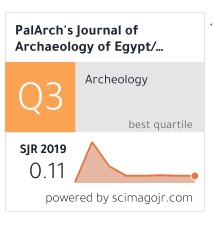AL SAWAD ABSCESS IN THE FIRST ABBASID ERA (132 AH / 750 CE - 247 AH / 861 CE)
Abstract
This study aimed to shed light on the procedures of the Abbasids in Al Sawad abscess, which was a major resource for the abscess tax belonging to the House of Finance during the first Abbasid period. And that was imposed on the space or job. And what was applied by Caliph Omar Bin Al-Khattab in the Al-Sawad area during the era of the Islamic state. Where the land tax is estimated according to the cultivated or cultivable area, and this system was in the interest of farmers, as yields were high prices, and the farmer only had to pay a specific abscess. He left the farmer with the freedom to dispose of his product in excess of the tax, so long as the tax was estimated on the fixed area for land, the amount of collection is fixed and stable.
It is noted that the Abbasid state did not adhere to the application of the system of sharing, in all aspects of abscess; there are areas that remained to pay the abscesses in cash.
Also, the Abbasid era was concerned with the amounts of the abscess, for which historical sources kept complete lists, and show the amounts of abscess that were collected from different regions of the Abbasid state at different times, and the types of crops along with the monetary amounts, as these lists helped in estimating the total that was collected from abscess.



